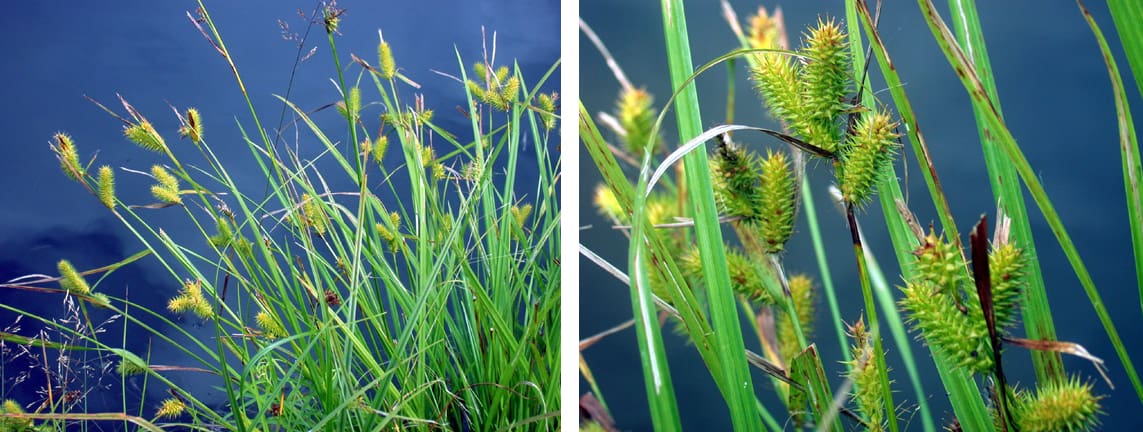Here’s the latest from the Erica’s Oddballs series! With each post, Erica will introduce you to interesting and unusual plants and offer tips for how to integrate them into your home landscape. Don’t miss a post–subscribe to The Home Outside!
Left: Common beebalm in Erica’s Garden. Photo: Erica Bowman. Right: Beebalm’s unusual spiked petals.
We already know that every garden benefits from its staple fillers, its surefire producers, and structural plants, but there is often room in even the most formal garden for plants that veer off into the wilder side of beautiful too. Even the most immodest, flamboyantly edgy plant varieties can meld elegantly with those of a more conventional nature, if done with care. Just think of the unusual-looking specimens that have already assimilated into the modern garden.
Common beebalm (Monarda didyma) is a good example. It’s found in gardens everywhere often blooming in casual harmony next to Phloxes, Echinaceas, Liatris, or Hemerocallis (to name but a few), but have you taken a close look at an individual flower lately? It’s easy to see how this crazy mop-head may have been an oddball once itself, relegated strictly to the herb garden for tea and medicine production. Yet there it sits today, a modern staple as ordinary as its daylily neighbor.
My ambition is to find discover these unusual gems before they make it to the mainstream retail market. In my continual search for the next “beebalm”, I’ve lately taken to incorporating collections of ordinary forest and meadow “weeds” into the garden. Every once in a while I find a true winner. The native/exotic wild plant palette is quite extensive here in Vermont and I am often surprised by the longevity of some of the flowers and berries. One of my recent winning examples is the lurid sedge (Carex lurida):
Lurid sedge by Erica’s pond. Photo: Erica Bowman.
I have just barely discovered the lurid sedge, also known as shallow sedge, on the banks of one of my ponds, which is right where it belongs. Impressed with the beauty of its chartreuse color and prickly inflorescence, it occurred to me that this plant has a place in the ornamental wetland garden. I am still working out the best complimentary plants to border this little beast, so for now it sits snuggled amidst stones on its watery bank, and appears happy, prickly, and well situated. I am thinking of creating an integrated garden with some of my homeless Siberian iris (Iris siberica) to contrast its clean dark green stems with this plant’s chartreuse prickles, or perhaps throwing in some purple-leaved Ligularia ‘Brit Marie Crawford’ next door. I’ll let you know how it goes.







